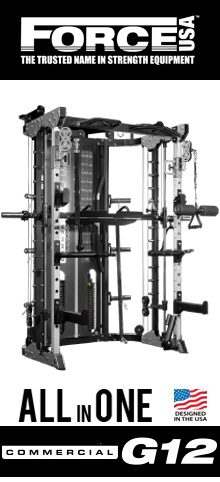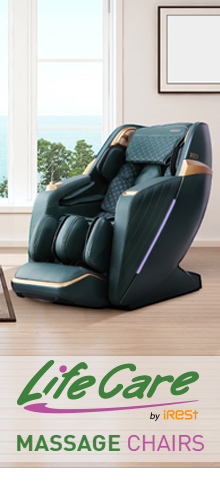Elliptical Types
If you are considering an elliptical for your home gym, you are in the right place! There are so many different parameters when it comes to ellipticals, that picking the right model for you can be challenging. For this reason, we have gathered here everything you need to know to make an informed decision.
Front Wheel and Rear Wheel Ellipticals
At first glance, you will notice that some models have their flywheel on the front end, while others have it on the rear end. They are called Front End and Rear End Ellipticals respectively.
Rear driven cross trainers have the flywheel at the back of the machine and have a slightly more elliptical motion. The front drive cross trainer has a flywheel at the front of the machine and a slightly flatter movement. Selection of a front or rear driven cross trainer is down to personal taste. It is the quality of the machine more than the front or rear configuration which will dictate the quality of the workout.
What you should pay attention to, before making your choice
Resistance Levels
In general having a larger number of resistance levels on a machine is better than only a few. The higher number of resistance levels will give you a greater range of resistance – similar to having more gears on a bike. However, cross trainer ‘A’ with 20 resistance levels might not offer more resistance than cross trainer ‘B’ with 10 levels (each level on cross trainer ‘B’ may just be spread further apart). So, in general, it is worth checking how many resistance levels a machine has, but we would not recommend using the number of resistance levels on a machine as an indicator of quality.
Flywheel
The flywheel weight is measured in kilograms. It’s an important factor which effects both the resistance and smoothness of a cross trainer’s movement is. In general, the higher the flywheel weight the better. Some manufacturers can list inflated flywheel weights so it’s also good to check the total weight of the machine. If the total machine weight looks suspiciously low for the flywheel weight advertised, then perhaps you should reconsider.
Stride Length
As a Stride Length, we mean the maximum distance between the rear of your front foot and the front of your rear foot as you workout. It is important to consider stride length when buying an elliptical. Usually, higher quality ellipticals have a long stride length (over 45cm).
The stride length effects the range of motion on an elliptical. Using a walking motion only requires a short stride length. Increasing the speed and intensity of the workout extends the length of the stride. If you buy an elliptical with a stride length that is too short, your movement will be restricted and feel awkward... So we suggest that you visit a showroom to try any elliptical you have your eye on, to make sure it is the right fit for you.
Maximum User Weight
This is a simple but important factor, useful to indicate the quality of the elliptical frame. For a example a maximum user weight of over 140 kg indicates a robust elliptical for regular home use. Commercial ellipticals often come with ratings that approach or even exceed 180 kg, because they are used non-stop at the gym.
Together with the maximum user weight, take a look at the total weight of the elliptical. If an elliptical boasts a high user weight rating, then it follows logically that the frame should be equally robust. If for example you observe a model with a user weight rating of 150 kg and a frame weight of 30 kg, then something suspicious is probably going on.
Make sure you have the right space
Compared to treadmills, the size of ellipticals can vary greatly. If you have limited free space, then be sure to check the assembled dimensions before you buy.
We would caution you to avoid spaces with increased heat or humidity, as they could damage the electronic components of your elliptical and in some cases even void its warranty.
Details that matter!
Now that you have grasped the basics, we will present you with some details that can make your workout more fun, but also more challenging. So feel free to also research the below.
Heart Rate Monitoring
There are two ways an elliptical can measure your heart rate level:
- Handgrip Sensors: Even the most basic ellipticals come with this feature. This data should not be used for medical purposes! In order to get a more accurate read, your palms should be wet and your grips firm on the the sensors. This can be tricky while you are running, so it is probably best to reduce your speed temporarilly.
- Wireless Chest Strap: Higher quality ellipticals are usually compatible with a wireless chest strap and even offer workout programs based on this metric. The chest strap is more accurate than the hand sensors, but it should still not be used for medical purposes. Finally, thanks to the HR programs, an elliptical can adjust the difficulty level depending on your heart rate level to help you achieve your goals.
Incline Adjustment
Most cross-trainers allow you to choose your desired resistance, but few allow you to adjust the incline. Exercising at high incline levels is more challenging, the same way that walking uphill is more challenging than walking on a flat surface, thus increasing the calorie burn rate.
Changing the incline and therefore the course of your movement, you are targeting different muscles. When the incline is high, you focus on the gluteal muscles and the biceps. On the contrary, when the incline is low, you focus on the calves and the quadriceps.
Stride Length Adjustment
An elliptical that lets you adjust the stride length, essentialy allows you to choose between walking (smaller strides) and more intense running (longer strides).
Stride Length adjustment is particularly useful for larger families, where members have a naturally different stride length due to their individual heights.
Self-Generated and Electromagnetic Resistance
Electromagnetic ellipticals use a variable magnetic field to adjust the resistance level. This type of resistance can usually be found on higher quality models.
Self-Generated ellipticals do not require a power supply, because all the energy needed for their operation is produced by the user's motion during the workout. This type is usually found on commercial-use models.
Ergometer Ellipticals
Measures resistance in watts. This is a nice feature for athletes looking for pinpoint accuracy however it isn’t necessarily important to the vast majority of people using ellipticals. This feature often comes with a hefty price tag.
Some last suggestions
After you have familiarized yourselves with all technical specifications and before you make your final choice, please be sure to consider not only your own needs, but also those of the rest of your family. For example, if you weigh 90 kg but a family member weighs 115 kg, then choosing a model with a user weight rating of 110 kg would be a mistake. Conversely, a lighter elliptical with a small stride length will not likely cover the needs of a large family, even if all members are light of weight. These are common mistakes that you can easily avoid.
 English
English
 Ελληνικά
Ελληνικά







